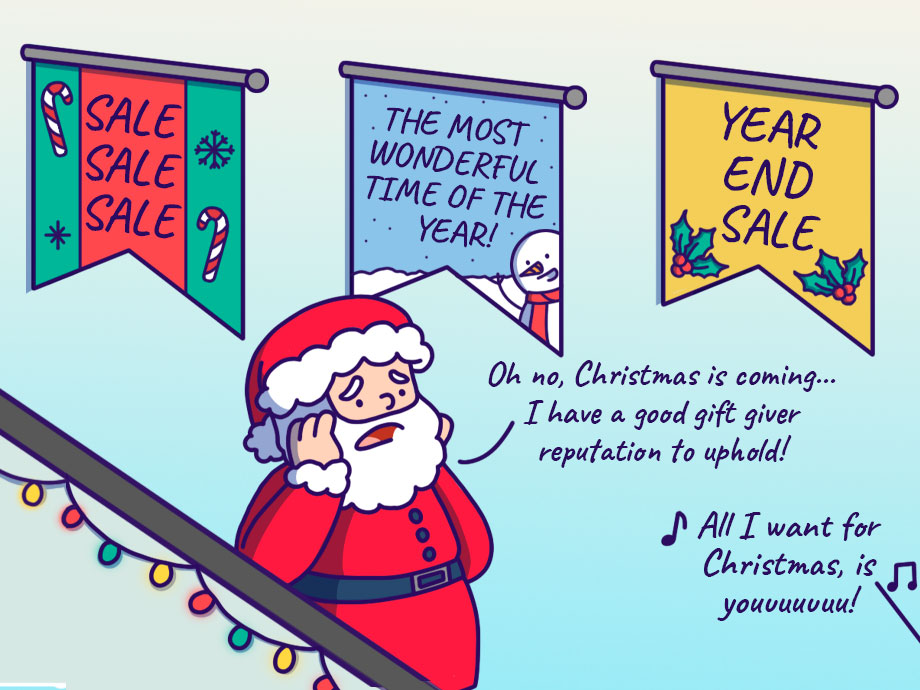Budgeting | Personal Finance | Article
How To Choose Your First Credit Card: Part 2
by Marcus Lee | 5 Feb 2021 | 6 mins read

In Part 1 of our credit card guide we talked about cashback cards and how to make them work for you based on your spending habits and the card’s T&Cs. Here, we’ll talk about rewards cards and how you can maximise them.
What are rewards cards?
With reward cards, it’s pretty simple: Step one, spend with your rewards card to earn points, step two, redeem your points for goodies.
The most common rewards cards that come to mind are those that allow you to convert your points to airmiles. For example, if RM1 = 1 point, once you’ve accumulated enough points, you can use those points to get discounted (or free) flight tickets. Usually, there’s a multiplier too. For example, you’ll get 5 points for every RM 1 spent on a card that offers a 5X multiplier.
How many types of rewards cards are there?
When looking at rewards cards you’ll typically see rewards in the form of proprietary points (eg. Bonuslink points), miles points, or benefits (eg. buy one free one offers at certain outlets).
The way these cards differ are in the point multipliers and in the points redemption. We’ll illustrate what we mean with three different rewards credit cards:
| Credit Card | Ceetee Miles Card | CHIMP Rewards Card | Maybe Bank Grub Card |
| Points multiplier | 5X points for overseas spend and 5X points on weekend spend at selected stores | 5X points at all departmental stores and grocery stores, 3X points for all other spending | 3X points for local spend |
| Points earned | Ceetee Miles points | CHIMP Rewards Points | Grub Points |
| Redemption | Convert points to airline tickets | CHIMP worldwide partners, including merchandise, vouchers, travel, and more | Cash discounts on purchases on the Grub app |
| Other benefits | Free airport lounge access, travel insurance, discounts at airports | Sign-up bonus, FREE trolley bag with RM2,500 minimum spend | Top-up to Grub e-wallet 5X points |
| Annual fee | RM600 | RM300 | Free |
The first thing to note about rewards cards are its categories. For our example, we selected three different cards that offer rewards for three different categories: travel, rewards specifically for Grub (a completely fictional ride hailing and food delivery app), and a card with points you can redeem only through CHIMP’s rewards portal.
Navigating rewards cards
Unlike cashback cards, maximising your rewards card benefits is a little more nuanced. But just like cashback cards, the best place to start is to look at your spending.
We’ll illustrate its nuances with our fictional cards introduced earlier:
1. CHIMP Rewards Card: Flexible Rewards Collection
The CHIMP Rewards card is similar to cashback cards in that if you spend at certain grocery stores frequently, you can enjoy 5X points, which you can then redeem for rewards with CHIMP Bank.
Depending on the credit card provider, how many points you’ll need to redeem an item will vary. For example, you might need 25,000 points to redeem a RM50 cash voucher for groceries with XYZ Bank, while the same voucher might cost you 30,000 points at CHIMP Bank.
Though RM50 may sound like very little compensation for how much you’ll need to spend (RM6000 = 30,000 points), you’re still going to shop at that grocery store anyway. So might as well earn 5X points while you’re at it.
2. Maybe Bank Grub Card: More Points, More Benefits, Little Flexibility
With the Maybe Bank Grub card, you’ll earn 3X points to use within the Grub app. Note that this card gives you points that you can only use in the Grub app. Usually, within these kinds of apps, the bar to convert your points for cash is much lower (i.e., 8,000 points = RM50).
In our table, notice that you’ll also get 5X points for all e-wallet top ups on the Grub app. For example, if you top up your Grub e-wallet with RM10 using your Maybe Bank Card, you’ll get 50 reward points. Then, if you spend that RM10 on the Grub app, you’ll get another 10 points!
In this ecosystem, you continually use the Maybe Bank Card and the Grub app in tandem to rack up points and eventually redeem those points in the app for big ticket purchases with in-app vouchers.
Of course, everything must be done in the app. This rewards card hooks you into a constant loop within the Grub app and before you know it, you’re paying for everything with the Grub app.
3. Ceetee Miles Card: Helping You Travel Like A Boss
Finally, the Ceetee Miles card’s benefits serve a very specific class of customers. These cards fall into the travel rewards category. For people who travel often either for work (or because they just have a lot of money), Ceetee Miles card will work in their favour as they’ll receive 5X points when spending overseas, they’ll get free travel insurance, and they get to enjoy access to the airport lounge.
To qualify for travel rewards cards, you typically need a higher monthly income and they usually have much higher annual fees than other rewards cards. Some higher-tiered travel cards even offer free hotel stays, free hotel transfers, and free driver service when you land. This tier of rewards card offered a certain level of comfort to those who travelled frequently for work circa 2019 B.C. (before Corona).
Making rewards cards work for you
With rewards cards, the rule of thumb is to find cards that match your spending habits and have a low barrier for sign-up bonuses. Once you’ve signed up for a card, don’t change your spending habits. If the card helps you to continue your spending habits but offer you higher points and benefits, then it sounds like the card for you.
Look for ways you can exploit your loyalty to a certain brand. Like the Maybe Bank Grub card, try to find cards that are simple to gamify and that fits with your spending patterns. E-commerce stores and certain grocery stores have similar partnerships with credit cards and can similarly offer better benefits than cards that have blanket point multipliers but take too many points to redeem.
If a rewards card only offers attractive benefits that you’ll hardly get to use (like airport lounge access), then it’s not worth the annual fees or the sign-up fees.
It’s very simple
Cashback cards and rewards cards both rely on loyalty. Loyalty to a petrol station, grocery store, app, or airline.
Choosing the right cards ultimately boils down your habits and your discipline: Discipline to only fill up on petrol on the weekends even if your fuel gauge has been flashing since Thursday or a habit of shopping only at selected grocery stores.
Compared to paying for everything in cash, credit cards can offer a lot of flexibility once you have the right combination of cards. Plus, they have a hidden benefit of improving your credit score (more on this topic soon).
That said, we’ll see you in Part 3 where we’ll talk about the psychology behind using cash versus credit cards, and how to avoid common credit card mistakes.














